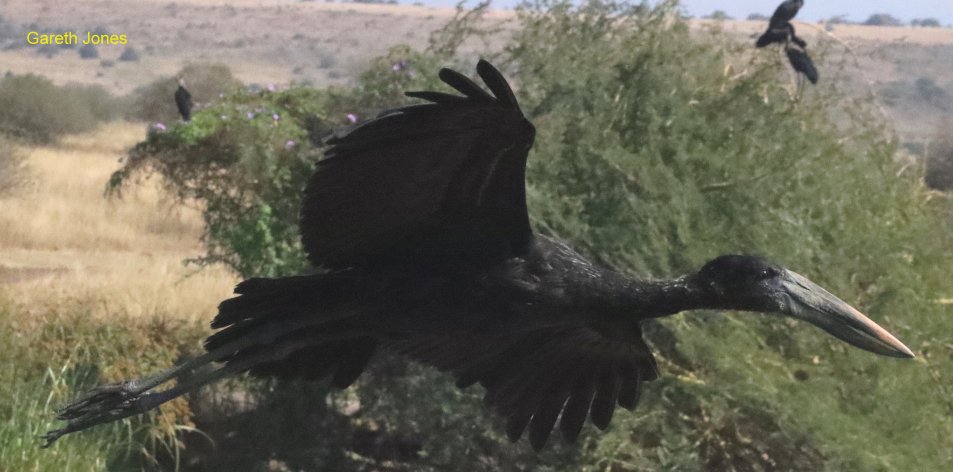
Open Bill Thrill!!!- Article by Gareth Jones
Open Bill Thrill – Nairobi National Park
As we approached the Athi basin dam early one morning, I slowed the vehicle down to a crawl speed in the hope that my arrival would not alarm any wildlife that might be at the water. My “slow-go” effort was thankfully rewarded, as there were also many species of birds standing in the shallow water near the edge of the dam. A cluster of tall dark birds was visible in the distance. Closer inspection revealed that it was a flock of African openbill, a type of stork species hunting for delicious aquatic snacks in the reeds. They were so focused on catching food that our vehicle was virtually ignored. Wow! What a sight to see as it appeared that there might be as many as twenty flocking together. It should be noted that openbill storks have never been common or abundant in the Nairobi National Park, at least over the past 20 years. Therefore seeing so many flocking together and seeking food in an almost sychronised, unified action was definitely an “open bill thrill” moment.
Many storks have a rapid strike technique by using their long neck in a recoil type almost whiplash action that is very fast when striking to catch prey. However, the open-billed storks use their bill differently predominantly because their primary food source is molluscs (aquatic snails) and freshwater mussels. They are also known to eat other creatures such as terrestrial snails, frogs, crabs, fish, worms, and large insects. It uses its large bill to detects its prey and can use it in such a way that it easily pries open molluscs. It tends to feed singly or in small groups.
There are a number of large-billed birds that are found in the park, apart from the saddle-billed stork, there are also many other types of interesting storks such as marabou storks, African openbill storks, yellow-billed storks, white storks, black storks, and woolly-necked storks.
The African openbill (Anastomus lamelligerus) is a species of stork that is native to large parts of sub-Saharan Africa. The African openbill is a stork 80–94cm long with a weight of 1–1.3kg. Its adult plumage is generally dark overall, with glossy green, brown, and purple on the mantle and breast. The bill is brownish and notably large. The legs are black and the eye is grey. It is a bird of shallow wetlands and can be found wherever its molluscan prey is available. African openbills breed during the rainy season when snails are more available. During that period, they perform complex displays, often involving bobbing, bill-clattering, and rocking back and forth with the head held between the legs. They nest in colonies in trees, as is typical of storks. Their nests are made of sticks and reeds and are roughly 50cm wide.
Sometimes it is best to just sit quietly and peacefully and let nature come to you. The Athi dam is definitely one of those places, where watching and waiting can be very rewarding. Part of that wonderful experience was watching the behaviour of the openbill storks with the almost comically posed looks, especially when they open their large bills, it looks almost like they are smiling. The flock seemed to have the most success when they hunted together for aquatic snacks on the shallows of the shoreline.
I know of some people that visit the park for the prime purpose of going on a “birding safari”, there are so many hundreds of species to see at all times of the year. Stopping at a wetland and watching the incredible variety of birds that God has created, is very rewarding and helps relieve stress. The African openbill storks are really worth watching for a while. Why not try it next time, maybe you will also experience an “openbill thrill” moment!


